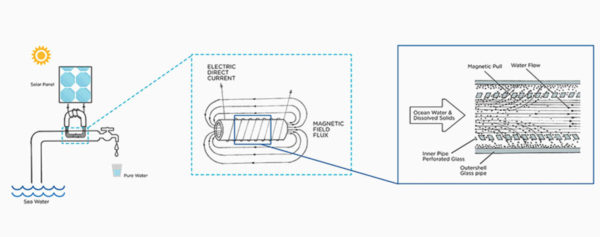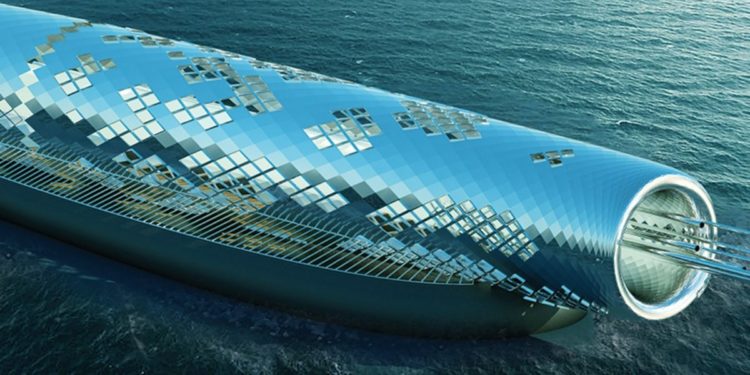Khalili Engineers has created “The Pipe”, a floating structure powered by solar panels capable of making sea water drinkable: it transforms 4.5 billion litres a year.
“Humanity has a terrible dependence on water and we must remember to appreciate and value this vital gift. What you are seeing is a change in the future of drinking water. It was with these words that a team from Khalili Engineers presented the futuristic project “The Pipe”. It is a floating device for the electromagnetic desalination of seawater. In other words, a huge stainless steel structure similar to a “pipe” (hence the name of the project) capable of making sea water drinkable. The project was developed to combat drought and water scarcity in coastal areas by “exploiting” seawater. The Pipe is 100% eco-sustainable. The structure is covered with photovoltaic panels that generate the energy needed to operate the devices that make the sea water drinkable. According to the creators, The Pipe “could generate 10,000 MWh of electricity per year, powering an electromagnetic filtering system capable of pumping in the same period 1.5 billion gallons (4.5 billion liters) of clean drinking water.

How does The Pipe function, the system for making sea water drinkable?
The desalination process used in “The Pipe” uses electromagnetic energy. “In Electromagnetic Filtration (EF), we use an isolated electromagnetic field on pipes that circulate seawater, separating salts and impurities. The process is very fast and extremely efficient,” explained the engineers. It gives two results: pure drinking water and clean water with a salinity of 12%. The first is conveyed into the primary water network, while the second is reintroduced into the sea through a Smart Release System that improves the quality of coastal waters. Unlike traditional methods, the EF process does not involve the use of chemicals and the water temperature remains unchanged. In addition, an EF plant consumes only 2,500 kWh of electricity per 300,000 gallons of water, compared to 4,500 kWh for a traditional desalination plant. The structure designed by Khalili Engineers was presented as part of the Land Art Generator Initiative, an international contest that every year awards the most innovative projects in the field of green and sustainable architecture.

































